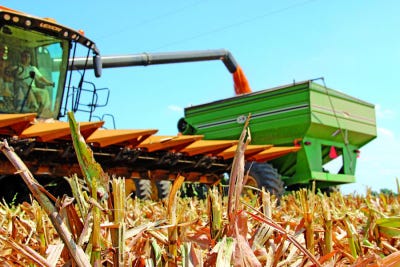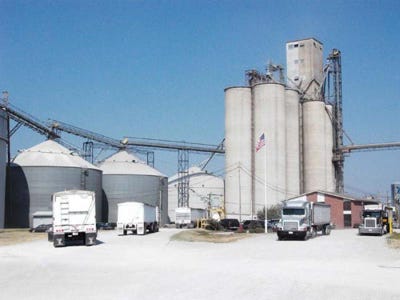
“We’re set up this year pretty much exactly like last year: tight corn stocks and a fair amount of demand rationing," says John Anderson, senior economist for the American Farm Bureau Federation in Washington. "The bottom line situation looks very similar," he says, "yet the market's reaction has been muted."

With a late corn crop and acreage much below farmers’ original intentions, plus tight stocks, and a situation shaping up much like 2012 when corn prices skyrocketed, why has the market’s reaction been ho-hum about this year’s late crop/prevented plantings?
Though fundamentals are much the same as last year, says John Anderson, senior economist for the American Farm Bureau Federation in Washington, there are enough differences that the market is taking a wait-and-see approach as to what the all-important weather will bring in coming weeks.
“I feel like I’ve been giving the same outlook presentation for about the last three years,” Anderson said at the Mississippi Farm Bureau Federation’s joint soybean, corn, wheat, and feed grains advisory committee meeting at Grenada, Miss.
“We’re set up this year pretty much exactly like last year: tight stocks and a fair amount of demand rationing — a little more this year than last year. The bottom line situation looks very similar. We’ve got high but fairly stable prices. We’ve had a lot of volatility in the past, but we’ve settled into a historically high, but fairly stable level.

JOHN ANDERSON
“We’re looking at potentially a big crop, a big harvest, and a big change in the supply situation that could put a lot of pressure on prices — which is basically the same forecast I gave before the start of the season a year ago. Last year, we had fantastic planting conditions and a very early planted crop that was expected to be a record.
“And we all know how that worked out,” he laughs. “Things fell apart and we ended up with the worst drought in decades over much of the country. That had a profound impact on markets, and we’re still facing a fairly short supply situation as a result of that.
“So, with this year’s late planting and acreage switches,why hasn’t the corn market been higher? There has been a lot of anxiety in the farm community about why the market hasn’t been paying more attention to this.
“On April 1, the December corn contract was at about $5.60, and even through all the late planting it never really rallied above that level. By third week of May, we had a seriously late crop, and the market was well below the April 1 price level.”
What impact does late planting have on yield potential? Reviewing historical trends, Anderson says, “As an economist, I don’t think analogous years tell us a lot. There’s not a lot of relationship between late planting and final yield. Only in 2012 and 1988 was there was a bit of positive relationship. We know that the more crop you have planted by week 19, the better your chances look, but it’s still a pretty weak relationship.
“In 1984, for example, the corn crop was really late, but final yield was 2 percent above trend. I don’t think results from a year that far in the past tells us much, since we have such different production methods and technology today.
“The point to remember is that planting date isn’t destiny; there are a lot of other things that come into play. We could still end up with a good crop this year. And I think this is indicative of why the market has been seemingly so disinterested in late planting.
“If we take a bigger view of total supply of feed grains and wheat, we’re looking at fairly large total supplies, even though corn stocks right now are tight. We’ve also seen some improvements in rice and wheat stocks, so the total supply number is fairly large — historically very large — and that’s another reason the late planting hasn’t been driving the market as much as some think it should.
“Bottom line: At this point, we shouldn’t make too much of the crop being late.”
Although the market had moved up a bit in the previous few days, Anderson says, “I think it was mostly due to soybean planting being a bit late and some positive demand numbers, rather than a reaction to late corn planting.
“If we get anything near USDA’s projection of a 156.5 bushel yield on 89.5 million harvested acres, a 14 billion bushel crop — and that’s a big if — we’re looking at use numbers of 5.2 billion bushels of feed use, 4.9 billion for ethanol, and 1.3 billion for exports, with a total use of 12.8 billion. [USDA's June 28 report forecast a record corn crop and sent prices spiraling downward. See story here: http://bit.ly/1cvTswq]
Change in market fundamentals
“The real bottom line, and I always harp on this, is the stocks-to-use ratio. We’d have about 2 billion bushels of carryover and a 15 percent stocks-to-use ratio. That’s more corn than we’ve seen in years and would be a huge change in the market’s supply fundamentals.
“That’s what the market has been focused on, as opposed to the late planting.

THERE'S STILL POTENTIAL for a large U.S. corn crop this year, which has kept market prices from reacting strongly.
“I would argue also that there is also quite a bit of slop built into the USDA’s demand projections — going from 4.4 billion bushels of feed use this marketing year to 5.2 billion next year? Theoretically, we could, but how realistic is that? That’s a big jump in feed use in a year’s time, when you’re talking about close to a 1 billion bushel increase in feed and residual use in a single marketing year. I think that’s probably an unrealistic number. “
A somewhat similar situation applies with the forecast for exports, Anderson says.
“Can we go from 700 million to 1.3 billion bushels in a single year? The exports numbers are a lot more elastic than a lot of the other numbers on the balance sheet. We’ve got cheap grain, and if buyers want it they’ll come get it. But that would be a huge recovery of market share in a single year. I think that number, too, is a bit optimistic.”
Looking at demand side of the market, Anderson says USDA’s projection for this year “would be pretty remarkable in terms of recovery — it would be a bit more than an 80 percent increase year over year. We can go back a long way and not see that kind of recovery in exports.
“I think that’s a really optimistic number, particularly when we consider that for most of this time the U.S. has had by far the lion’s share of the export business, but it’s still a smaller share of world corn exports than in a long, long time. Given that smaller share, I believe it’s optimistic to think we’ll get that kind of recovery in export demand.”
The projections call for nearly a 20 percent increase in total feed and residual use year over year, Anderson notes, and “That’s a big change. It’s tough to change livestock numbers that fast, dealing with biological systems that have fairly lengthy production lags. Poultry can turn around faster than any other livestock sector, but even there you’re somewhat constrained on how quickly you can get your numbers up and increase feed use.
“Going back to the late 1980s, there’s never been a 20 percent year over year increase in feed use. The closest was in the mid-1990s, when we went up about 16-18 percent. That was the period when poultry production was growing 6-8 percent per year and exports were going crazy. That’s not happening now; it’s more like 2.5 percent.
“So, can we support a 16-18 percent increase in feed use with the livestock sector we have right now? I won’t say it can’t happen, but again, I think that’s a fairly optimistic number.
“To get the kind of use numbers USDA’s talking about, things are going to have to break just right. Which takes me back to my original question: Why hasn’t there been a bigger market reaction to late plantings?
More cushion than numbers indicate
“I think a lot of people are looking at the potential for very big crop, that there’s been some destruction of demand — which might recover in a year’s time, but it could easily hold back — so there’s a bit more cushion than the USDA’s numbers indicate.”
That would still be the case even with numbers below the government forecasts, Anderson says.

USDA’s EXPORT projection for this year “would be pretty remarkable in terms of recovery," says Farm Bureau Senior Economist John Anderson.
“Let’s say we get 2 million fewer acres of corn planted than USDA forecast in their June report. That’s probably about where the market is now in terms of expectations; the consensus seems to be we’ll be off about that much.
“Plugging that in, dropping yield by 10 percent to 140 bushels, with a 12.25 billion bushel production, increased feed usage of 4.55 billion bushels, increased ethanol use to 4.8 billion, and increased exports to1.1 billion, that’s 11.8 billion bushels of total use. We’d still end up with 1.25 billion bushels of carryover and a 10 percent stocks-to-use ratio — which would be higher than we’ve seen in several years.
“Even with what looks like a fairly short crop compared to current expectations, we could increase all our major use categories and still end up with higher carryover.
“That isn’t a forecast, but it is a good illustration of why the market reaction to late planting has been somewhat muted.”
What if this year’s crop should turn out like last year’s?
“The 2012 crop was about 28 percent below trend,” Anderson notes. “If we should get a repeat of that, things would look totally different, and we’d be right back in the same situation we had this year.
“That becomes the $64,000 question: Where will 2013 yield end up? People argue about this a lot. A 156.5 bushel yield is USDA’s current estimate. Is that realistic? To me, 156.5 is higher than my mid-point estimate. I’d probably opt for 152 to 152.5 bushels, based on historical trends; I think that’s realistic. But 156.5 is not a crazy number — it’s within the ballpark of a feasible number; it’s still an achievable yield, I think.”
A supportive factor in this market, Anderson says, is that “Hay stocks have been really, really tight until recently. A lot of hay has been put up this spring, but going into this season, hay stocks were the tightest they’ve ever been.
“It’s hard to know what’s in the hay stocks numbers. When it gets dry, hay gets scarce, and prices get high, anything that can be formed into a ball with twine around it becomes hay. I expect there’s some of that in USDA’s stocks numbers. How much, who knows? But if we’re counting that, we’re overestimating how much hay there is.
“Prospects still look good for this year’s crop, but from where we are right now supplies of total feeds, including hay, are tighter than we’d like for them to be. We’re still kinda sitting on a razor’s edge.”
About the Author(s)
You May Also Like



